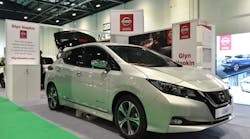Every day we read about utilities who are preparing for and, in numerous cases, investing in infrastructure for electric vehicles (EVs). Many experts predict that EVs will make up 40% or more of the vehicles on the road in a short span of 10 to 15 years. In addition, transportation analysts claim that most automakers are planning several new EV models. Bottom line: the transportation industry is going electric and the power industry needs to prepare. Is this a case of “I wish it will, I hope it will”, also known as fake news, or are those of us in the doubter category missing something?
First, let’s just say the possibility of a large segment of EVs is intoxicating for utility planners, techies, environmentalists, and many other folks. It is not a secret that utilities have been seeing little or no load growth, and in some cases negative growth, for 10 years or so. A meaningful shift to EVs would certainly help resume load growth. Okay, that may be the understatement of the year: the transportation fuels market is worth literally billions of dollars per day. And since personal cars and trucks account for a significant percentage of domestic transportation fuel consumption, even a modest single digit shift would be significant for electric load. It is not surprising that utilities do not want to let this opportunity go. In fact, there’s so much interest in EVs these days that Transmission & Distribution World recently announced it would start covering EV related issues and other industry trends in a new segment called “Charging Ahead.”
We’ve established that there is “smoke” related to this issue, but is there fire? While the topic of EVs seems to be hot (bad pun), is it realistic to expect that there will be a mass conversion from internal combustion and hybrid vehicles to all EVs in 10 or so years? Some utilities are doing more than just investing in infrastructure to make it happen. For example, AVANGRID, Inc. recently announced plans to provide a US$5000 discount toward the purchase of a Nissan LEAF EV to customers and employees, and to increase its own EV fleet by 75%. This is impressive, but will actions like this be enough to engender mass conversion?
This author is not convinced. Maybe, it is a generational thing. Some of us from the muscle car era are still kicking around. Cars need to have the capability, at least, to be fast and loud. How much testosterone does the sound and speed of a golf cart evoke? Admittedly, there are some very fast and hot EVs out there, but they are not affordable to the masses. According to Wikipedia, there are about one million EVs on the road in the United States and the latest figures show plug-in passenger cars made up just over 2% of the U.S. market share in 2018 sales. Various sources report there are about 265 million registered vehicles in the United States and based on historical trends, about 90% are light duty vehicles, which are primarily passenger vehicles. Combined, these figures tell us we are going to have to add 94 million EVs to the road over the next 10 to 15 years to meet that 40% EV projection. That is probably not possible since total U.S. passenger car sales were 5.3 million in 2018 according to Statista. Maybe, that 40% figure was over-reaching. Let’s focus on what can be done to make a significant difference in EV sales.
Certainly, actions like those taken by AVANGRID, Inc., such as vehicle discount promotions, and a continuing commitment to invest in EVs and charging infrastructure to advance the plug-in electric vehicle (PEV) market are helpful. Other companies have offered free parking to employees for EVs; several states are offering tax incentives and, of course, the Fed has offered tax rebates for new EVs for several years. Yet, all these efforts have gotten us where we are: one million EVs on the road out of 265 million total vehicles. It is a conundrum. Obviously, utilities need to continue their efforts if they want to see the EV market blossom. Accelerating battery and related technology advances as well as more focused sector coverage by the media also can’t hurt. One neat trick that helped institutionalize cars in the early years was auto racing. How about more EV races? Alas, the last ingredient may be something utilities cannot realistically do and what the auto industry has resisted so far, and that is offering a quality EV at a truly competitive price compared with its internal combustion peers. Economy and reliability are what made several vehicles through history a household name and it can happen again with EVs. What automaker will bite the bullet and make it happen?


